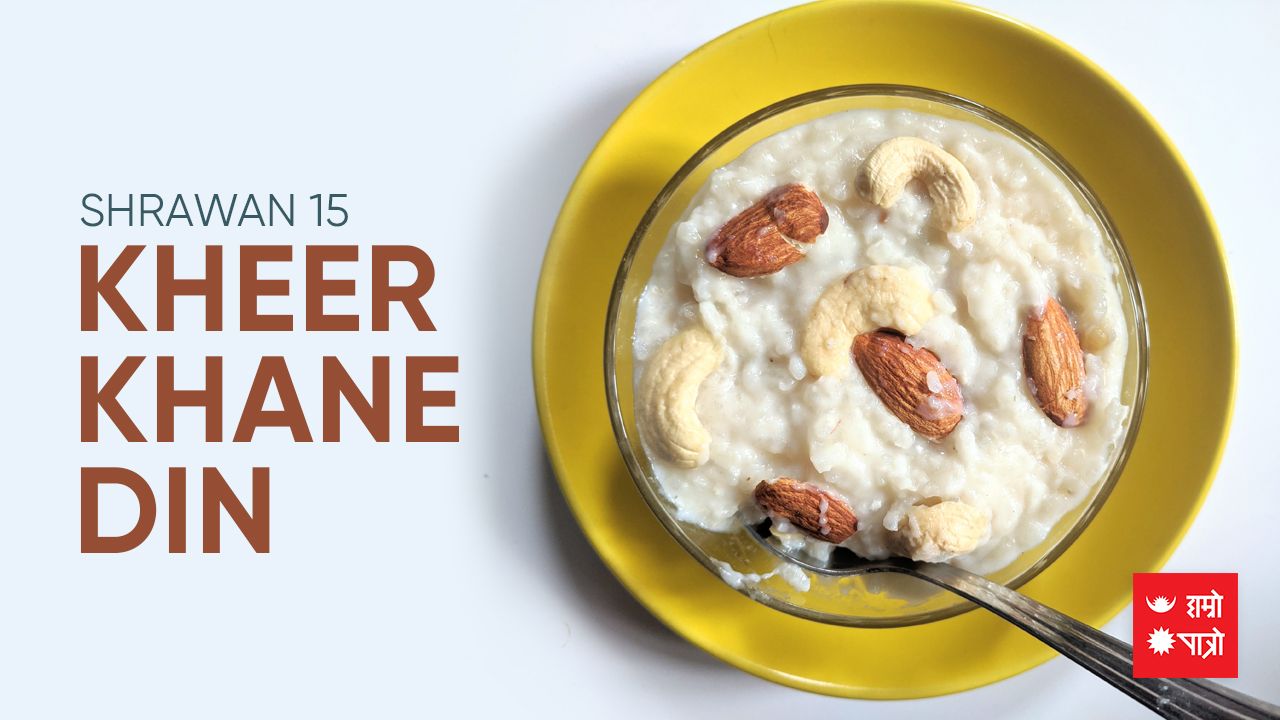
Introduction to Kheer
Milk rice (Kheer) is a sweet and nutritious food and this is the dish that is prepared after the combined cooking of Sankhar or Gund with our favorite milk rice, Kheer. Kheer is said "Rice Pudding" in English, but today I am not translating the term, Kheer in Nepal is Kheer with all our Nepali way and significance, let me begin from here, welcome to the Shrawan 15th, Kheer khane diwas of this year.
Nepali way of Kheer
It is said that the taste of Kheer depends on the quality of rice grains, rare and exclusive grains like Basmati, Taichin, and Kariyakamat adds more aroma, taste, and texture to Kheer. Kheer is made by adding milk to the rice we have, especially raisins, cashews, coconuts, chowda, etc.
In the Nepali tradition, kheer is celebrated with importance in various festivals, commemorations, poojas, and weddings. It is known as an indispensable dish of the Nepali family and a popular cultural dish among Nepalis. I remember my childhood when we were offered Kheer in the large leaves of Saal, Bhorla, banana, and Duna Taparis. Kheer is best complimented by Sel roti, traditional Nepali sweet, a default recipe of Nepali kitchen.
Human civilization and the importance of milk
Human civilization, grains, and milk have an inextricable link, Kheer is the triangular meet of all these three aspects. Kheer has managed to become popular in the world community especially for its purity, health, and distinctive taste.
The unique combination of grains and milk among such dishes is the food, nutrition is its attraction in this dish. This food mixed with white milk and white rice is associated with the ancient churning of the sea by the gods, since then it has been considered as polyunsaturated nectar mixed with milk purifying elements and nutrients.
Importance of Kheer in Ayurveda
Even in Ayurveda, Kheer is described as an ancient food. The word kheer is also believed to have come from the Sanskrit word 'kshirma'. Kshir means a dish made from milk and grains.
Even in Roman civilization, it is customary to consume kheer as an indispensable element of food. It is called 'Payas' and in some places, it is also called 'Tasmai'. In the Vedic Sanatan rites, it is customary to cook kheer as a mixture of milk and grains to offer to the ancestors.
Lord Krishna and Kheer anecdote
Lord Krishna one day disguised as an ordinary saint went to "Baag Chaal" ancient game like ludo, with a king, and in return for the victory, he made a condition to feed Kheer for the poor and needy in different temples for free.
In remembrance of Lord Krishna's victory over the king in that game, it is still customary in the temples to distribute kheer prasad to the poor. Khir is made from raw coconut milk in South India, Bangladesh, Maldives, Kingdom of Siam (Thailand).
We are rich in culture and philosophy, Kheer Khane does not have to wait for any work or occasion, however, the 15th of Shravan is considered as a special day to eat Kheer, i.e. the center of Shravan is prevalent for Kheer. And you brought milk to make kheer? Today, milk is widely sold in Nepal. Milk shops have been crowded since morning, don't forget to make kheer for yourself. If it is in the city, then the milk in the dairy, which runs out at 3-4 PM on other days, may run out before 9 a.m... It may not be available when it is late!
May the sorrows of Ashadh and Shravan be transformed into happiness and joy in Mangsir and may the main thing become pure, clean, and sweet thoughts like Kheer, good luck with Kheer!
Suyog Dhakal
Liked by: